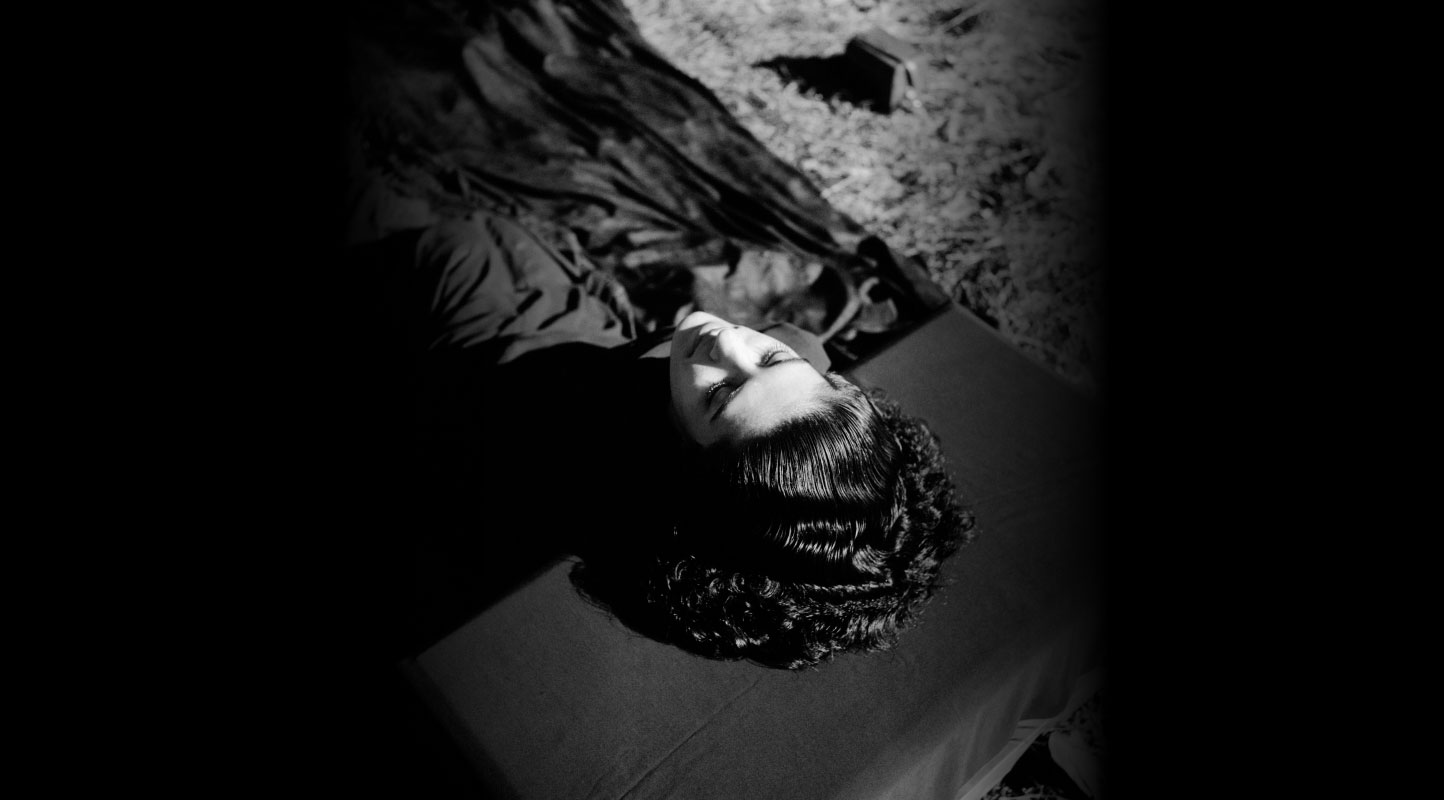On “Global Photographies”: Limits and Possibilities
“How would it change our perspective of contemporary photography to encounter it first from the viewpoint of Bogotá or Beirut, Taipei or Cape Town?” Lucy Soutter asks in her introductory essay to Global Photographies, a recently published volume that brings together thirty-six contributors and promises a timely interrogation of the relationship between globalism, globalisation and photography. Available to freely download digitally via open access, the collection, which emerged from sustained collaboration between researchers and art practitioners, offers a rethinking of the existing, predominantly Western canonical writing on photography. Through a focus on historic and contemporary artistic practice in non-western geographies, the highly readable and thoughtfully organised edited volume offers theoretical and ontological explorations of the photographic medium and practice. On 28 February 2025, at a panel discussion at the India International Centre, New Delhi, the co-editors, Duncan Wooldridge and Lucy Soutter, shared the conceptual and editorial process behind the making of the book, while Tanvi Mishra, writer and curator, presented her contribution on “decolonial” artistic practice in the South Asian context.
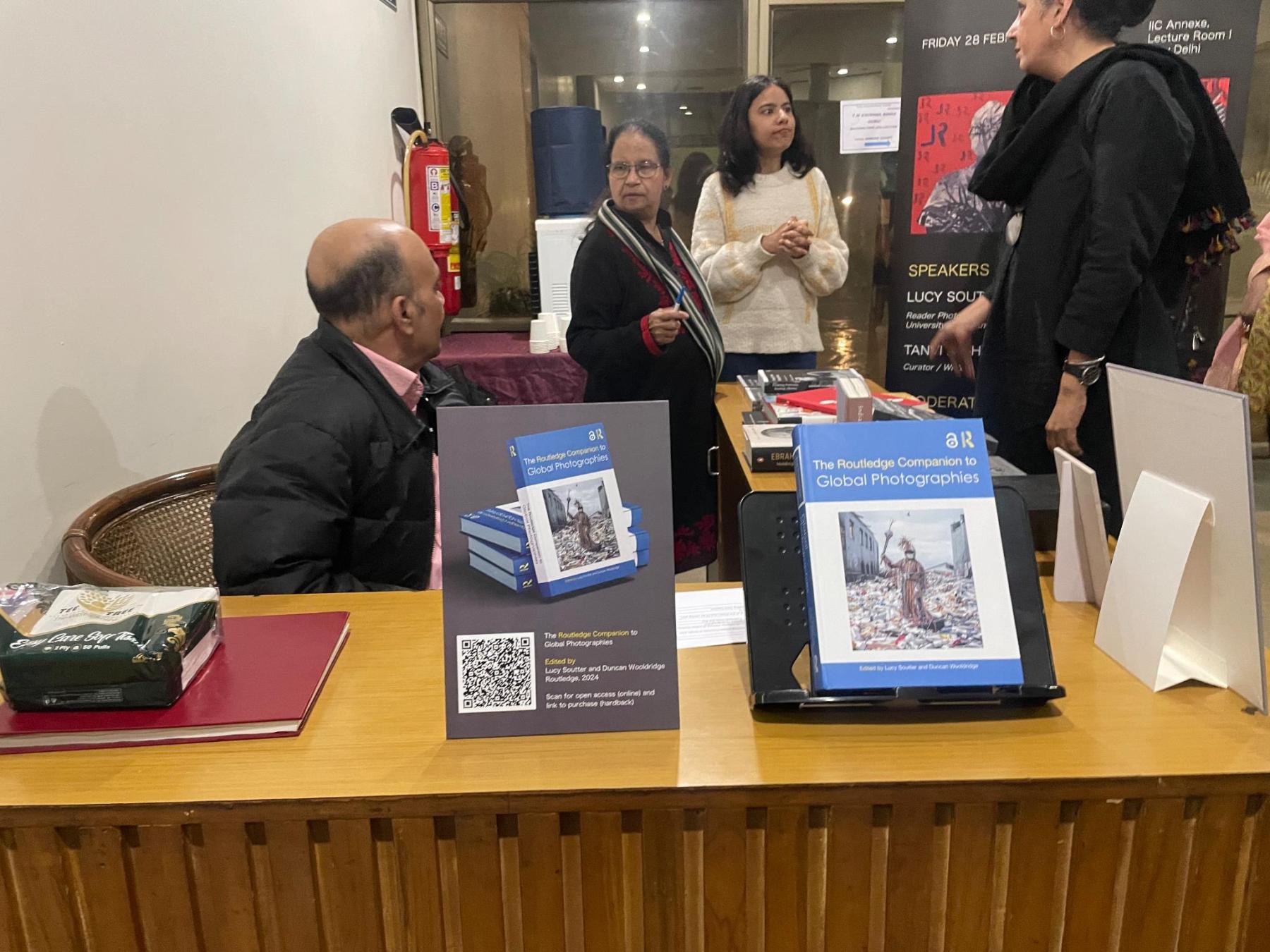
The volume, Global Photographies, on display at IIC along with a QR code for easy access to freely accessible e-copy. Image courtesy of the author.
In his introduction to the panel, Rahaab Allana remarked that the book is an important successor to earlier compilations on image-based work such as Liz Wells’s much celebrated The Photography Reader and David Bate’s concise introductory volume Photography: The Key Concepts. For Allana, the semantic shift suggested by the volume’s title, “Global Photographies,” does not simply “index the multiple” but makes global a question mark for further inquiry. In the context of South Asian image-making, the decolonial, he suggests, was often “used as an exclusionary epistemology field” and “global was an illusory location, foregrounding the nation and the nationalist.” Highlighting images that offer other possibilities, such as the work of C.K. Rajan, member of the Kerala Radicals, Allana asks how the analytic “decolonial" can respond to these specific histories; in what ways does the concept “illuminate blind spots, and does it actually also take us beyond them?”
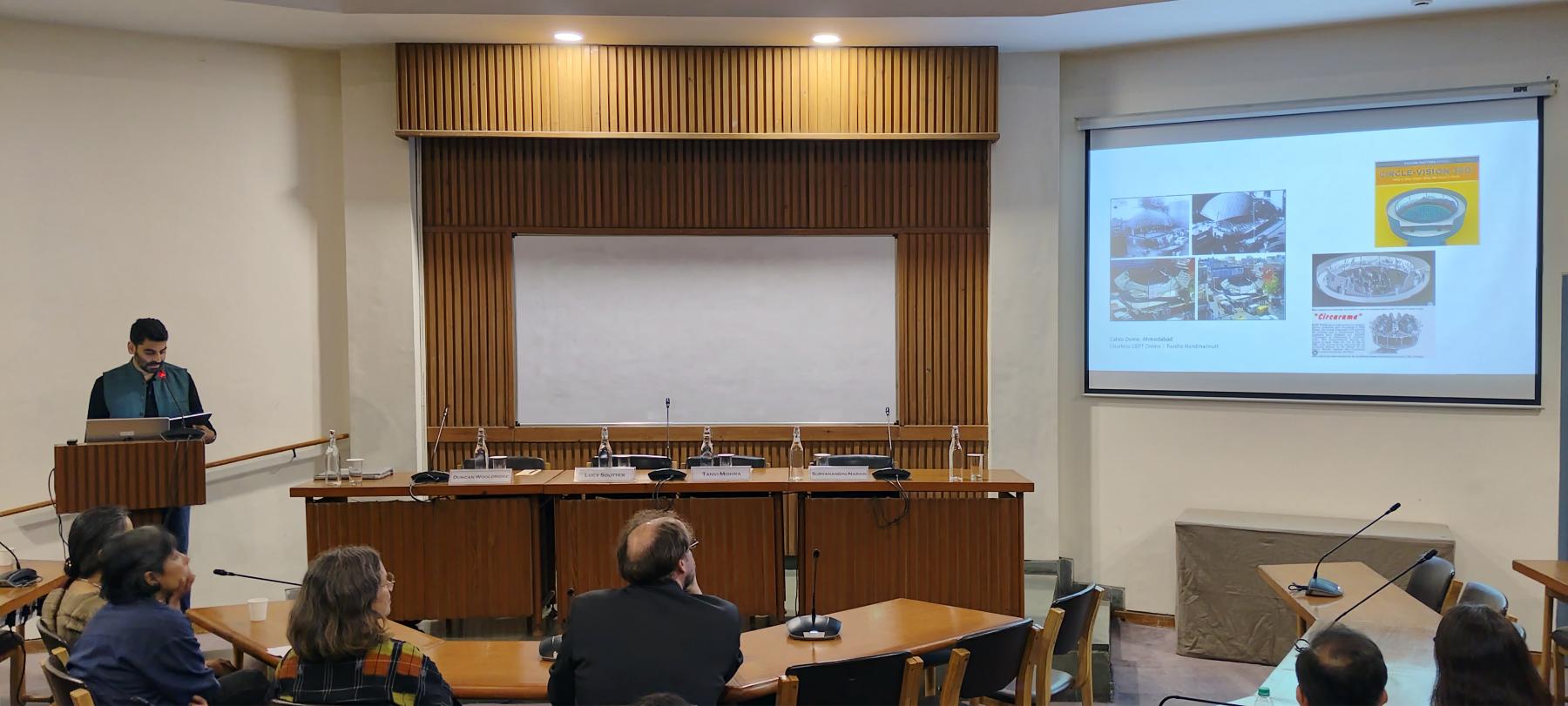
Rahaab Allana takes the audience through characteristic South Asian image-making practices in the twentieth century.
Moving away from considering photography as a medium and a practice that “fixes down,” Wooldridge characterises photography as an “ongoing condition.” In sharing the practical and conceptual work behind the publication, Wooldridge traced the book’s origins to the early years of the COVID-19 pandemic when the changed conditions of university learning compelled a few instructors at universities in the UK to rethink their pedagogical practice. To foster a collaborative dialogue that moved beyond the canonical framing of photography as a Western, ahistorical practice, the Global Photographies Network organised a series of talks by scholars and practitioners from institutions across the world. The year-long series eventually led to a virtual conference where the central contributions to the book took shape.
Global as an organisational frame is both alluring and unwieldy, with the possibility of easy slippage into a project that can become a simple addendum of geographies. In the world of curation, global, Soutter stressed, often becomes a homogenising force that commodifies difference even as the history of orientalism continues to inform contemporary reception of works from non-Western contexts. The Chinese artist Yao Lu’s work, for instance, brings attention to ecologically destructive processes by recreating older artistic practices in the very space of landfills. However, in international art fairs Lu’s work is often displayed in ways that reinforce national identity and elide the powerful ecological critiques underpinning his process of image-making. To navigate these charged histories and multiple valences of the global, the editorial organisation of the volume focused on a set of thematic frameworks that could allow the reader to see frictions inherent in the analytic of the global by moving between different scales—from the global and transnational to the regional. This would permit focus on the historically specific ways in which ecological or decolonial practice has emerged.
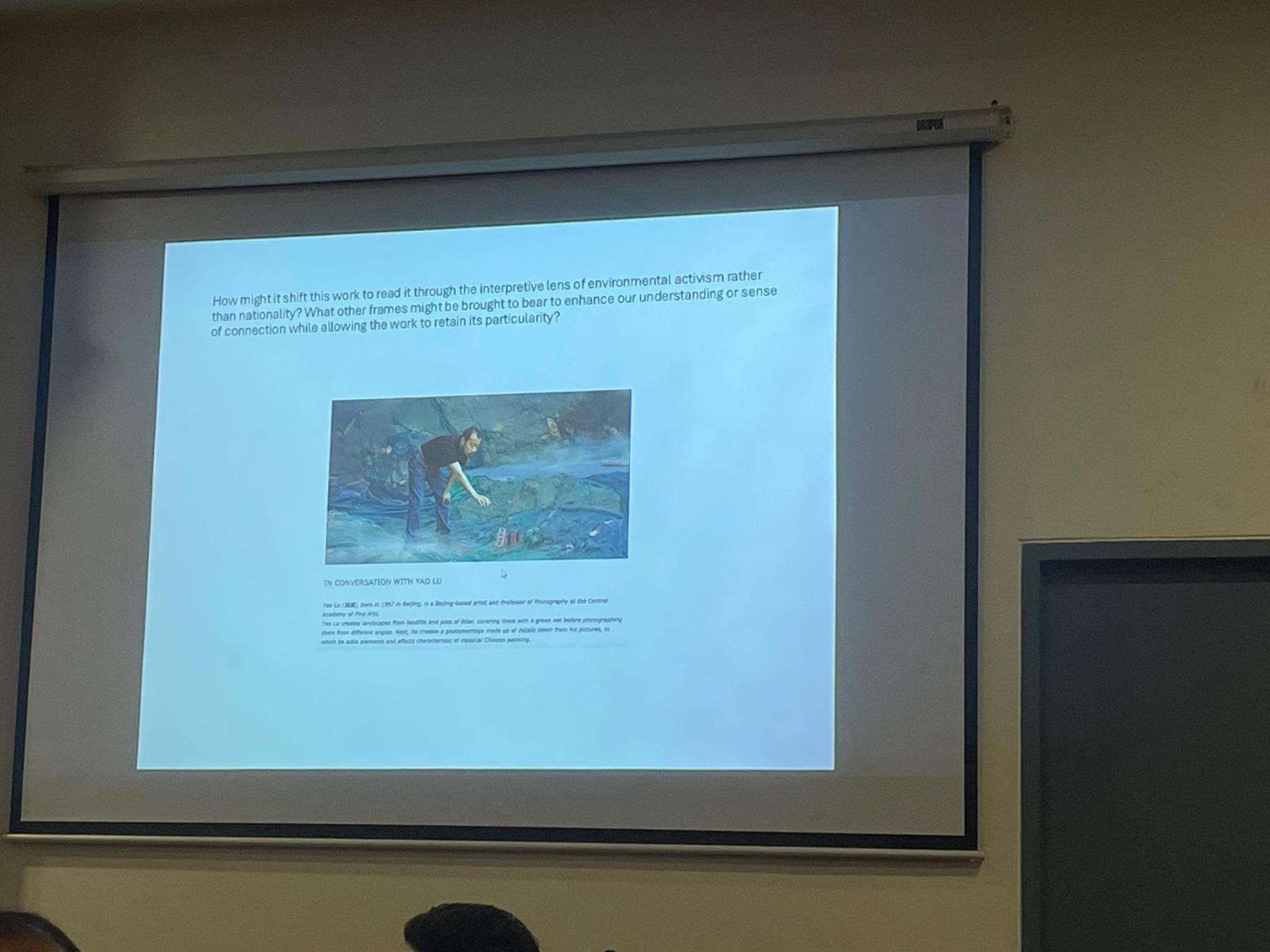
Lucy Soutter drew attention to the decontextualisation of Chinese artist Yao Lu’s practice within the circuits of international art fairs in western Europe. Image courtesy of the author.
Tanvi Mishra, Delhi-based curator and writer, views coloniality “not as a historical incident but as an ongoing force.” Speaking about her contribution in the volume titled “Decolonial strategies and the South Asian imagination,” Mishra notes that historically, and in contemporary political life in the subcontinent, decolonial functions as a “smokescreen,” or as the postcolonial studies scholar Priyamvada Gopal suggests, as an “imperial logic.” In her own writing practice, Mishra admitted that the decolonial was not a mode she had employed in understanding South Asian image-making. The process of writing the article thus became an inquiry into the possibilities of identifying the specificity and limits of decolonial praxis in the region.

Tanvi Mishra takes the audience through the process of writing her contributing paper to the volume.
Mishra highlighted three themes that characterises the “South Asian decolonial”: the use of personal memory and auto-narrative, the questioning of archives as a technology of power, and the formulation of counter-narratives to hegemonic models. The photobook, Witness, for example, brings together works of nine contemporary photographers from Kashmir and foregrounds lived experience, memory and personal history over impersonal rendering of Kashmir as a conflict zone. Vishal Kumarawamy’s work, Marana (Demise), mobilises the power of images as a “resistance space,” by deploying symbology specific to Dalit community. A process that at once memorialises community practice and also compels the savarna viewer to confront their own homogenising gaze. The decolonial here, Mishra suggests, thus becomes an active and ongoing negotiation. Finally, decolonial artistic praxis in the region also questions the historical asymmetry between scientific and local or indigenous modes of knowledge. Bangladeshi artist, Munem Wasif’s project Seeds Shall Set Us Free juxtaposes cyanotypes of rice grains alongside images from the Nayakrishi Andolan, an agrarian movement that centres chemical-free practices and sovereignty over farming knowledge, which is increasingly engulfed by the agro-capital complex. The curatorial decision to organise images on the same plane promotes a horizontal and democratised plane of authorship, rather than a hierarchised perspective that privileges the scientific over farming communities’ own knowledge.
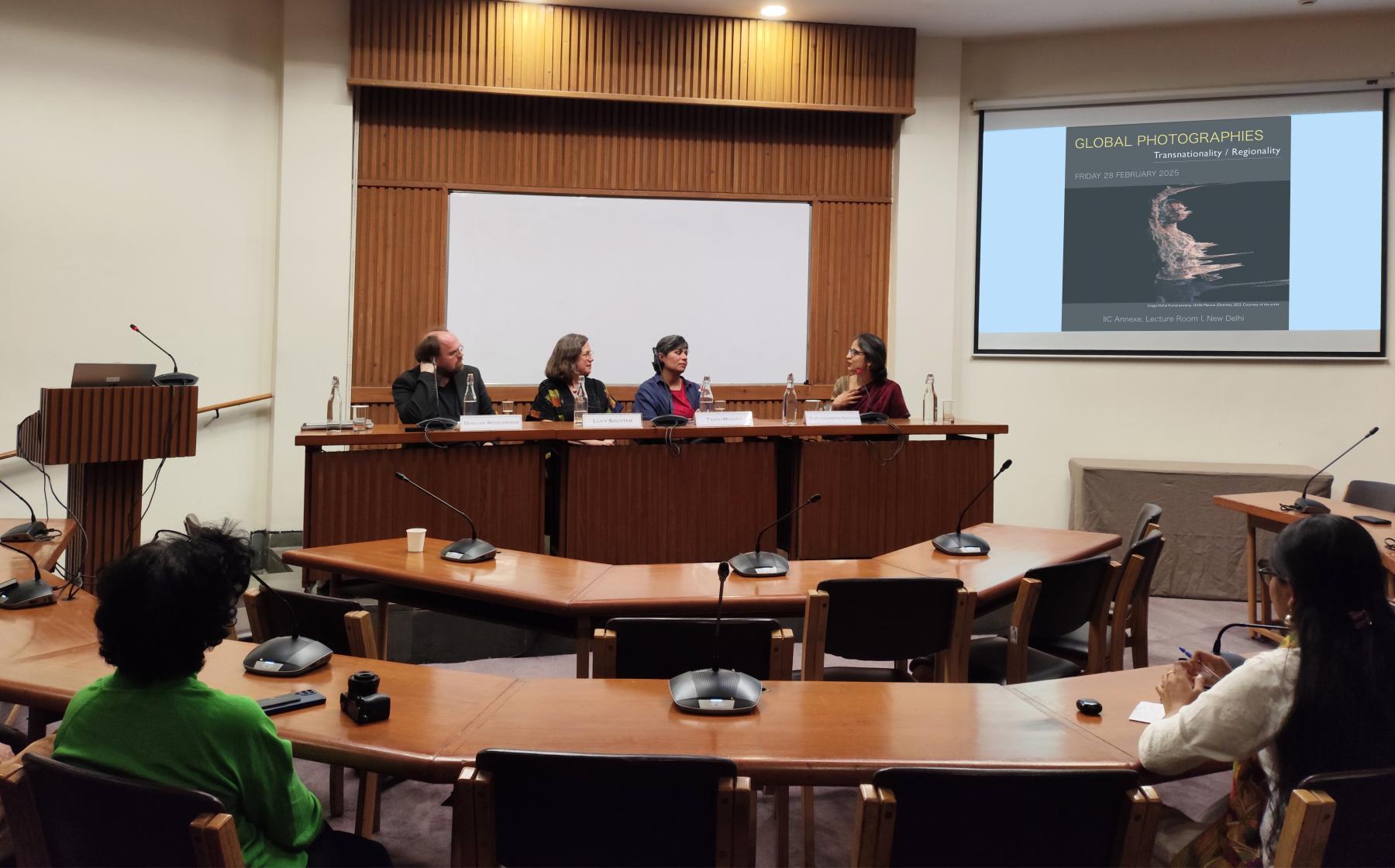
The panel discussion featured (from left to right) Duncan Wooldridge, Lucy Soutter, Tanvi Mishra and Suryanandini Narain.
Opening the discussion, Suryanandini Narain, Assistant Professor at the School of Arts and Aesthetics, Jawaharlal Nehru University, inquired about the editorial process and asked the presenters to share challenges of bringing together thirty-six papers. The co-editors acknowledged the importance of collaboration with colleagues across geographies. They stressed the critical role played by section editors in identifying writers and organising thematic contributions. In responding to Narain’s question about the limits of translation, for example, on vernacular histories of photographies in regional contexts, Soutter remarked that she hopes that if the editors have “succeeded in creating anything through this project, it is a loose set of discourses and questions.” Wooldridge reiterated that the editorial aim was not to undertake a fantastical project that aspired for absolute completion but rather to encourage further work which can take on the monumental challenges opened by positioning the ‘global’ as an ontological problem for photography.
To learn more about recent symposiums around publications unpacking questions of South Asian image-making practices, read Shankar Tripathi’s reflections on Framing Portraits, Binding Albums: Family Photographs in India (2025) and Mallika Visvanathan’s notes on the panel curated around documenting conflict organised in conjunction with Another Lens: Photography and the Emergence of Image Culture (2024).
All images courtesy of the Alkazi Foundation, unless otherwise stated.



